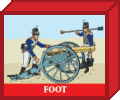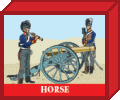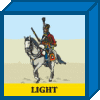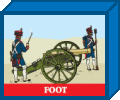Foz do Arouce – 15 March 1811
Historical Background
The Combat at Foz do Arouce on March 15th, 1811, was the forth rearguard action fought during Massena’s retreat from Portugal. Once again, Marshal Ney commanded the rear guard. Disobeying Massena’s orders to cross the Ceira River and destroy the bridge near Foz do Arouce, Ney deployed around the town with Marchand’s Division, half of Mermet’s Division, and Lamotte’s light cavalry. It was a good yet dangerous position with the Ceira River at flood stage and the narrow bridge across it already somewhat damaged.
As at Redinha three days earlier, the 3rd Division attacked the French left while the Light Division attacked the French right. The Light Division caught the French unprepared and was making good progress towards the town as was the 3rd late in the day. Only an infantry charge ordered by Ney allowed the French to cross over to the far side of the river. By nightfall the withdrawal was complete.
Foz de Arouce was similar to the Combat of the River Coa fought on July 24th 1810. On that occasion, it was Ney who pursued the Light Division over the Coa. Now the Light Division played a key role in forcing Ney over the Ceira River.
Ney’s acrimonious relationship with Massena would continue to deteriorate. Within a month, he would be dismissed for insubordination.
The stage is set. The battle lines are drawn and you are in command. Can you change history?
|
|
Set-Up Order
|
Battle Notes
British Army
Commander: Wellington
5 Command Cards
6 Tactics Cards (Optional)
Move First![]()
![]()
![]()
![]()
![]()
![]()
 |
 |
 |
 |
 |
 |
 |
||
| 4 | 2 | 1 | 1 | 1 | 3 | 2 | 1 |
French Army
Commander: Ney
5 Command Cards
5 Tactics Cards (Optional)![]()
![]()
![]()
![]()
![]()
 |
 |
 |
 |
|
| 4 | 2 | 2 | 2 | 3 |
Victory
6 Banners
Special Rules
Any ordered French infantry or artillery unit (regardless of strength and with the exception noted below) that exits the battlefield from the French exit hex will count as a Victory Banner for the French army. Exited leaders and cavalry units do not count for French Victory Banners.
The French foot artillery unit on the far side of the Ceira River must remain on that side. If ordered off the battlefield, it does not earn a Victory Banner for the French.
French units cannot exit from the French exit hex when forced to retreat due to ranged or melee combat. Units must halt or remain on the exit hex and lose one block for each retreat hex that cannot be taken. If the unit is eliminated, the British player receives one Victory Banner.
The bridge over the Ceira River is a Victory Banner objective hex for the British player. If a British unit occupies the bridge at the start of the British player’s turn, the British army gains a Victory Banner. As long as the unit remains on the bridge hex it will count as a British Victory Banner (the French line of retreat has been blocked). If it moves off or is eliminated, it no longer counts (Temporary Victory Banners Turn Start)
The Ceira River is impassable except at the bridge.

